-
Posts
2,264 -
Joined
-
Days Won
499
Everything posted by Kevin von Duuglas-Ittu
-
Continuing a bit with my footnotes and further reading, here is an interesting passage which speaks to the head hunting practice in the Philippines (a practice that is thought to be a warfare logic that was fairly common in pre- and early history mainland SEA, though becoming marginal in the rise of the city state), something that I've discussed in my treatment of the logic of Soul Stuff. from Some Comparative Thoughts on Premodern Southeast Asian Warfare Victor Lieberman Journal of the Economic and Social History of the Orient, Vol. 46, No. 2, Aspects of Warfare in Premodern Southeast Asia (2003), pp. 215-225 (11 pages) V. Lieberman rightly points out that SEA in the Anthony Reid hypothesis, faces a counter logic in its own history of warfare, and interrogates it with a series of prospective questions.
-
Continuing from the article above, The primary result of warfare in Siam was that a village, a tow, wld be marched as slave labor en masse to a new location in proximity to the victor's land. There were constant forced migrations that often involved harsh marches. This is 1 reason why warfare could involve evasion. For this reason capture & surrender often involved strategic assessment from the nobility, towns caught between major powers. Escape into the forests was a option for the common folk. The conclusion paints a vivid picture of the kinds of choices that faced the towns and villages that would be relocated to the Chiangmai region of Lanna. Continuous warfare instability, famine, tigers and bandits.
-
Thank you so much! Glad you are getting a lot out of the material. Your trip sounds fantastic, and you've picked some great mentors to train with. I don't know much about the private training situations, but I do think with Burklerk you should stay with whatever accommodations he has as Lampang can be spread out. And Sagat isn't at 13 Coins which closed a while ago. He trains privately in various gyms, often at Jaroenthong's gym in BKK. Sylvie helps book privates for him. I suggest contacting her through Instagram.
- 1 reply
-
- 1
-

-
Chamuakpet's Switch
Kevin von Duuglas-Ittu replied to Carter's topic in Muay Thai Technique, Training and Fighting Questions
It's awesome to hear you studying the fights of Chamuakpet. I haven't looked at them closely in a while so I couldn't say, but I like your idea that he's tracking the openside with his knee. Karuhat's switches seemed to be score relevant, closing the openside when he had the lead, etc.- 1 reply
-
- 2
-

-
footnotes. More on the transitory, seasonal migration of culture in SEA. Not only the patterns of tradewinds, but also large scale slave captures in warfare. Not only was there a continuous cultural mix from external cultures, slave warfare was constantly stirring the influences within SEA itself. "Southeast Asian Slavery and Slave‐Gathering Warfare as a Vector for Cultural Transmission: The Case of Burma and Thailand" (2009) and then a restatement of the Anthony Reid thesis with detail on slave management by skill:
-
More footnotes to the thesis that war was essentially labor capture, and that this was extremely wide spread. In the 1830s Chiang Mai (region) population was reported to be 3/4s comprised of war slaves. from "Of Corvee and Slavery: Historical Intricacies of the Division of Labor and State Power in Northern Thailand", Katherine Bowie
-
In interested in the principle of Soul Stuff, as expressed in religious/spiritual/political terms, this article on Barami, and the reforms that the first monarchs of Bangkok Siam made is an excellent, detailed capture, if you wade through the historical details. The King viewed as embodying, or pursuing the Ten Perfections: THE VESSANTARA JATAKA, BARAMI, AND THE BODHISATTA-KINGS: The Origin and Spread of a Thai Concept of Power << JSTOR This royal, rarefied bodhisattva Buddhistic Barami is, I believe, connected to the much older martial Barami of Kings and chieftains, which finds itself expressed in culturally still through the values of charisma, and in Muay Thai still. From the introductory paragraphs: And from the conclusion:
-
and later from "Siam’s Colonial Conditions and the Birth of Thai History" Thongchai Winichakul A bit more support of the notion that Siamese battles were personified moral contests, at least from the historical perspective. Further up in this thread this is discussed in terms of representational, ritualistic combat, a logic of combat that at least to me likely played out on the local level of betting, provisional Muay Thai over centuries: combatant as substantive representative for a community or clan. For more thoughts in this direction see, this theory on the Spiritual logic of Thailand's Muay Thai:
-
There is a really good 2+ hour video in the Muay Thai Library project which documents the legend Karuhat deciding to switch Sylvie from orthodox to Southpaw. It shows you how he did it, and talks about the reasons why he did it. It's really good: Karuhat was a switching fighter, one of the best, so some of this is just his own ability to step into southpaw, but he was trying to solve specific things in Sylvie's style. She ended up fighting for about a year and a half in Southpaw before switching back. I think its great, honestly. I prefer her as a southpaw fighter. She eats up space a little bit more, is much stronger up front, and kicks better. The problem with most moves to Southpaw is that offensive weapons may very well improve, but defense will suffer until fully developed, so in fights the comfort level might not be there for a long time. Generally though, if you feel better in southpaw that is a huge reason to go that way. And, southpaws have natural advantages in most matchups, you automatically gain those.
- 1 reply
-
- 2
-

-
If interested in other examples of differing martial logics, these two videos by S.C.M. Paine who teaches at the Naval War College, on her theory of Continental (occupy) vs Maritime (trade) Empires may be worth listening to. I found them fascinating. She repeats her theory in each, the second one is a Q&A with more emphasis on contemporary events and is probably more engaging. The Geopolitics and History of Continental and Maritime Power - S.C.M. Paine (2 years ago) Sarah C. M. Paine - WW2, Taiwan, Ukraine, & Maritime vs Continental Powers (new) Her theory of empires is perhaps related to these historical questions about Siam & mainland warfare (there have have been informative debates over whether early Siamese empires were land oriented or maritime), but her theory does not explicitly map onto the land vs labor analysis. A dialogue between these two frameworks would be interesting.
-
A View from 270+ Fights Losing feels invariably bad and I do think there are some very profound reasons for this, but it also can be understood as so much more, especially in the service of growing as a fighter, or in support of the development of fighters. And, I do not mean this in the kinds of hyperpositive truisms that get passed around like "You win or your learn". I mean this in the sense of thinking of fighting as a personal path towards whole person nurture, the idea that fighting is an art, and fighters are in some very real and important sense artists, which is to say, creators. Their canvas is their bodies, their emotions, human instincts, the ring and the ropes, the opponents they face, the 1,000s of hours, but they are growing something, becoming something. They aren't just "winning" something. It's from seeing fighters as doing something with their Life Force, however you want to define it: anything from spiritual "woo" to just material energy. Some of these reflections came out of Sylvie's last fight against a fighter that many who surrounded her felt she should have beat. There was 5 kg between then, sure, but there was this expectation. In my view, it was really just a small technical issue, that if solved would have produced a very different outcome, but it was a close enough fight and very easily could just go to "water under the bridge" for a fighter who has fought 260+ times. Fighting, we've always understood, is a process. It's part of training. But this time I had a different set of thoughts. Losing is like pruning. We like to think of fighters on a very broad arc of development. They learn, they strengthen, they reach a period of peaking, then they decline. And because of this we try to create this peak middle level part of the arc and really extend and push for it. We imagine a period of extended growth that we just keep magnifying, improvement upon improvement, like a bush that just keeps flowering and flowering over and over again, every minute there is a flower, a state of constant bloom (much like how we see economic booms in the world)...until it suddenly doesn't. I'd like to invite a different conception, something that changes our ideas about losses. Now, believe me I'm no gardener, but we bought this plant, some call a Desert Rose, sold on the side of the road when we were driving through Isaan after a fight. Karuhat was with us and he told us that the Thai name meant something like "show stopper" because its blossoms are so stunning they gather a crowd around them (if I get that right). We've since had a little trouble in its care, reading up on it quite a bit, never being gardeners ourselves (that's its first bloom coming in above). In any case, one of the things we've run into - and of course actual gardeners are very familiar with this - is that flowering plants need to be pruned (or sometimes pinched), in order to flower better, more completely. The cutting back on the growth of the plant at certain stages, in certain places, allows it to direct its life-forces towards the next blossoms. And cutting away a blossom after it has reached its peak ("deadheading") also will further its future flowers. You do not hang onto blossoms after they've bloomed, and a plant does not just blossom richly if you just let it grow however it wants. There is no natural state of blossom on blossom-ness. Flowering plants need to be cut back, if we are moving towards a particular aesthetic. This is what losing it. It is an involuntary cutting back of the plant. It hurts. The plant suffers (it is injured). It is not "learning" so much as it is redirecting its energies, no longer in that direction. We picture things like undefeated records, or even winning streaks as a good thing, but one of the interesting things about Thailand's Muay Thai is that even legends of the sport experienced extensive losing (because fighters always were forced into matchups that gamblers wanted to bet on). Fighters would be forced up in weight, or be forced to face opponents that gave them trouble, if they had a winning streak. And any extended winning streak was a kind of artificial creation, something accomplished because fighters had excessive political control over who their opponents were. After a brief stretch those streaks often ended a career. The weave of fighting involves losses. When you fight well over 260 fights you see deeper patterns. You see progress and valleys, you see aspects of a fighter or matchups strengthen or weaken over time, and training or promotions shift. But, in considering the nature of losing itself it seems much more apt to think of it as a pruning process, the cutting away of a plant to make way for the possibilities of flowers. Now, a plant can definitely be cut back too harshly. You might cut into a plant's capacity to grow and support itself, but, in a deeper way in order to flourish a flowering plant needs to be cut into. There isn't really a "natural" uninterrupted continuously amplified growth to flower. We need to think in terms of cycles, and energies, pathways to growth, even in fight careers that last 10 fights, or 20, and not 100. We've always felt that if you are facing the right kinds of opponents you should be losing 20-30% of your fights, if your aim is to become the best fighter you could possibly be (and not just to be "top dog" of a pool of fighters in some way, which can also be important). This insight unto pruning gives greater sense to this instinct we've always had. Losing, in the right portion, at the right time, is productive. It's part of the redirection of the plant toward flowering. Its one reason we've also said that fighting a lot is really important too, because it taps you into these different deeper cycles. If you are fighting rarely this meaning, this use of pruning loses its context. It moves fighting into other processes, other meanings. As an artist in development, the plant moves through stages, and these stages cycle through. It isn't just flower after flower. And the plant likely lives and blooms through many more cycles than one might imagine, if you just think in terms of one defining arc of performance. And, there is pruning in training. There is pruning in the work.
-
Totally. It's really all the fabric of the culture that holds Muay Thai together, and which made it become a sport (art). Every signification in the ring has some meaning. And I suspect Thais (Siamese) have been betting on ring Muay Thai for 500+ years, much longer than modern nations have been around. The roots of it run very deep in the culture.
-
To add a bit of the anecdotal from our own lives. Two brief vignettes. We were driving back to Pattaya passing through lots of rural land by Ubon, sprawling fields of rice clustered with Ox or cow, very very verdant. It just feels like another time out here. Karuhat is in the car and we are talking about Muay Thai, and about the land here. Karuhat somewhat spontaneously talks about the culture of the land. He says that out here people just tend and and take care of animals. His gestures and body language say how simple and natural it feels to him. This is a way of life. Karuhat lives in the bustling center of Bangkok, and prefers it that way, but he is wistful in that moment, and even says that he would like to live not far from a highway and take care of plants and animals. There is a distinct ecological, romantic picture of this mode of living. The second one is from Sylvie and her sparring with Yodkhunpon, the Elbow Hunter. They talks between rounds and she asks him what this particular food she kept seeing signs on the highway for, way up in Isaan. He tells her that its Ox placenta, it comes in season, and it isn't food. It's used in a preparation. He then says: They used to know how to prepare it, now they don't. And, as an aside he says "they used to know how to prepare Muay Thai" also. There was a parallel of a feeling of a lost knowledge connected to a more ecological way of the past. Yes, if they are selling the placenta people are using it, but perhaps there is a sense that even that knowledge is disappearing, just as the preparations of Muay Thai are disappearing.
-
This is also one of the challenges to the common Western (and global) attempt to export Thailand's Muay Thai techniques, piece by piece, bio-mechanically. As if this strike, this kick, this counter can be taken out of the fabric of its ruup (the full cloak of traditional Muay Thai) without losing much of its potency...and its meaning. As a technical cog it might be quite effective in other somewhat mixed if not Frankensteined fighting styles, because they are honed from a century of modern fighting, but like a word taken from a language a great deal of what it means and importantly what it does. And significantly, was Western and International values of training start to enter into Thailand's pedagogy itself, as Thais and Thai trainers start to put on the cloak of the Westerner (in part driven by the rise of Entertainment Muay Thai, but also many other factors), the meaning and use of those words becomes lost to Thais as well. (I write about the rise of the combo in Thai training: A faith renewed in the hope and future of Muay Thai, beyond its Farangification). In a certain sense the roots of Thailand's Muay Thai do not lie within its techniques, or its traditions, but in the conditions under which that Way-Of-Life underwent its living, in the kaimuay throughout the entire society, the dispositions and cloaks of its cultural expression.
-
One does not have to indulge in magical or even spiritual beliefs in order to appreciate some of what is being expressed here. There is a famous fragment from the Greek Philosopher Heraclitus (popularly known for his supposed assertion that all things change). This fragment is often translated as "Character is fate" (“ethos anthropos daimon", ήθος ανθρώπω δαίμων). It's a very difficult phrase to translate because of the multiple meanings of ethos and daimon (a multiplicity that Heraclitus probably intended), but here it is best to point out that ethos, from which we get "ethics", means something like "disposition" but also "manner" and "habit". Our way of being, of appearing through its repetition, is what makes up our destiny. Daimon can mean destiny or fate, but it also can mean life-guiding, life-determining spirit. We get the word "demon" from it (as Christianity positioned it that way). It is not unlike the kinds of spirit guides that are invoked by the Chewong. The ultimate meaning of the phrase from Heraclitus is disputed, but it probably means something like: "The way you have been, the way you have conducted yourself is the way you will go". We can see the connection between "appearance" and "capacities", and how it relates to identity. The Chewong see animals (and plants) as persons who have a Way-of-Life, an ethos, which shows itself in how it appears (its cloak). If you put on that cloak, with cool eyes, you enter that Way-of-Life, and you acquire the ability to see in a certain (altered) way. Your daimon, your spirit, your fate, becomes aligned with your altered manner. In Thailand when a young nakmuay (traditionally around the ages of 10-14) enters a kaimuay (camp) he is inculcated into a Way-of-Life, which is not only the patterns and manners of the kaimuay (what the Sociologist Bourdieu would call its habitus), but also the specific ethos of a nakmuay. The dispositions of ruup, of postures and emotional shapes and reactions of how a nakmuay should be, not only in the ring but also in life. The ethos of the boy is being changed, cultivated, no differently than it would be changed if he had entered into a monastery and learned that Way-of-Life, those dispositions, those constellations of ruup. One does not have to be a believer in spiritual things, or of animism or magic to see this. Through habit and practice we change our appearance. And as one's ethos, one's manner, is changed, so too is one's fate or destiny (one could say one's capacity). Following the Chewong, so also changes your eyes, the values and particularities you pick out in the world when you engage in it. If you shape one's appearance, if you change one's cloak, you change your capacity in life. You can live among a different people. And, much of what draws the Westerner to Thailand and the beauty of its Muay Thai is that unique cloak...(and in its authenticity, its capacity, its eyes).
-
I want to open up the idea that the cultivation of specific ruup and form in Muay Thai, traditionally, is not altogether different than the taking on of a sakyant form (magically, spiritually), at least within a logic of spiritual animism. The training of the body to be relaxed, upright, fluid (thammachat, natural), balanced, explosive, achieved in Thai kaimuay through arduous, repetitious work, interactive play, kru aesthetic shapings, are not just about learning techniques biomechanically, but rather in acquiring the cloak (the robe) of a certain form of expression, and this form of expression is tied to the capacity to see in a certain way. Sylvie and I talk a great deal about the "eyes" of Golden Age legends, that they can literally see the fight, the opponent differently than others do. In the study of Karuhat this is most pronounced in the way he is able to read weight-shift, and spatial closures which produce great anticipation. But Karuhat's own ruup is quite special. Below (video) is the painful receipt of Sylvie's Tiger Sak Yant by Arjan Pi. She wrote about her experience here: Transformation and Belief: Receiving my Sak Yant Sua Ku and Takroh This isn't to say that there is a one-to-one correspondence between the receipt of a sakyant, in sincere belief and practice, and the rigorous development of putting-on-the-cloak of Thai ruup in a traditional Muay Thai kaimuay, but there does seem to be an underlying regard for the power of representation and putting-on a shape, that it can change one's eyes, and one's capacities (and not always for the better). The Jangwah (rhythms) of Muay Thai, its postures, are earned transformations of perception that likely is in coincidence with the animistic beliefs of sakyant reception, especially in a traditional context. The "image" in Thailand (and SEA) carries with it a perceptual force, one might argue, that is quite different from the Western traditions (in Philosophy, but also culture) which have regarded image as dangerously false, going all the way back to Platonism. The cloaks of the Chewong, when used by those with cool eyes, contain a kind of trans-cultural capacity of perceptual shifting, and with a capacity for action. It does not go too far to see that the postures and rhythms of Muay Thai, in its tradition, also contain these analogous capacities...and possible dangers. As one seeks to gain the "eyes" of the other, to see as they see, one alters one's form, if we follow the Chewong.
-
Concepts of Form, Animism and Embodied Difference A few notes and an extended citation from the reading of "Seeing and knowing Metamorphosis and the fragility of species in Chewong animistic ontology" by Signe Howell. Philosophically its quite an interesting piece in the way that the animistic conceptions of the Chewong reflect on modern experiences of crossing to other cultures, learning from other cultures, and also thinking about experiences of alterity, political pluralism and study in the land of another. Principally it discusses the Chewong beliefs that shaman and others of a species can put on the "cloak" of another species, marry into, live as that other species, gaining the "eyes" of that species, and in some cases simply become (trapped?) in that species, or expelled. A man may become and live as an elephant, a frog or spider may become and live as a human (wearing that cloak). Meaningful aspects of these transformations include the idea that if you gain the other species "eyes", you learn to see the world as they do, and this different mode of seeing is what distinguishes them from human beings. All species are indeed of a single culture (it can be described in that way), all species in an instance can be understood and experienced as "person" -- there is an animistic principle that a person could be defined as anyone or anything you exchange or share with -- but when wearing their cloak (their outward appearance) you gain their eyes. This sight is what separates species and kinds. Ruup As a Way of Seeing I'll drop the relevant page screencaps below, but a few notes on this in terms of the study of Muay Thai in Thailand, and the experience of living in Thailand as a Westerner. The first one is something that Sylvie and I have discussed a great deal on, the notion of ruup. Ruup is your outline, your form, as a fighter your basic posture. Thailand's fighting styles have particular ruup, and when learning how to fight in them, if you are going to do it at a deep level, you need to learn this ruup. These involves attitudes of stance, principles of high and low, symbolic expressions of ease or strength, physical response patterns. In fact the ruup of a style composes an entire vocabulary or even a visual language of expression. What the Chewong's animism study alights us too is that putting on the ruup of another, what is called its "cloak", changes your eyes. It changes how you actually see, an importantly in this, in terms of fighting styles, the values by which you perceive things. The things that will stand out to you. When wearing a cloak of "another" the world itself as it is understood and is valued, changes. This is a complicated causal relationship because its not entirely clear that the wearing of the cloak (changing one's outward appearance) directly changes one's eyes, but it is implied. In terms of Thailand's traditional Muay Thai we can gain insight into the importance of ruup itself. It's not just an assumed physicality, but rather an entire semiotic disposition to one's opponent and the ring, the sport, that alters perception itself. And, there can be a sense that not everyone can put on the cloak of ruup, in a transformative sense. There are ways in which Western fighters "put on the cloak" of Thailand's Muay Thai that read more as a kind of "Muay Thai drag"...the eyes have not changed yet, or they lack the shamanistic cross-cultural capacities...they do not have "cool eyes" in the Chewong sense. At the very least the Chewong example opens up this principle of ruup appearances and perceptual change. Becoming a nakmuay, in the more traditional sense, is to have the cloak that changes your perceptions. You see differently. This isn't a belief of Thailand, per se, but the study of it may shed light into generalized SEA animistic principles. I've written about animism and Thailand's Muay Thai here: Toward a Theory of the Spirituality of Thailand's Muay Thai. What the Chewong beliefs do is create a perspective on inter-cultural transformations, the kind of which happen in the more authentic attempts to learn and live the practice of Muay Thai in Thailand, and I take note of some small parallels I've seen in Thai examples. There is the story of the Naga (a snake people, who adorn the staircases of Thai wats) who wished to be a novice monk so that he could practice Buddhism, and who disguised himself as a man...and much like in the Chewong mythology was also found out. In Thai magical mythology there are several stories of shape-shifting shaman (lersi, sian), were- stories, or shaman who take on the heads of animal spirits. We recall attending the sak yant blessing ceremony of Arjan Pi, who has given both Sylvie and myself our sakyant. In these events very devoted followers would occasionally become possessed by the yant they had been given, a monkey (Hanuman) or a tiger. Arjan Pi would admonish and warn that if you have been possessed this is a bad thing. You lack control over yourself and that energy. It is controlling you. This is a basic Muay Thai principle as well, just mastering the energies of fear, aggression and anger, channeling them. This is to say that these notions of cloak-wearing, and value changing do occupy Thai conceptions of spirit and human capacity, and they are thought of in terms of dangers. The stories of the Chewong help fill out this animistic picture, and perhaps the realities of what it means to take on the values and experiences of another culture, the eyes of another way of being. Some of Muay Thai is about that. And, alternately, if Thais (Thai fighters) are urged to take on the ruup of Western or other cultures, wear the cloak of those cultures, then they took will experience a change of eyes.
-
Anthropology, Philosophy, Metaphysics, Ecology and Muay Thai It's not absolutely necessary, but in order to understand Rennesson's ecology of Northern Beetle Fighting, and to build from this an ecological view of Thailand's Muay Thai its best to anchor into some metaphysical concepts. Rennesson mentions the innovative biologist Jakob von Uexküll who had a significant impact on philosophers. Below I attach a PDF of a solid summation of von Uexküll's influence and inspiration on Deleuze & Guattari, and their attendant Spinozism. Its worth reading to acquire the framework within which these arguments are made: excerpt from "From ontology to ethology: Uexküll and Deleuze & Guattari" by Felice Cimatti From ontology to ethology PDF.pdf << download here, chapter 10 of the book Jakob von Uexküll and Philosophy_ Life, Environments, Anthropology-Routledge (2020), by Francesca Michelini and Kristian Köchy. The excerpt leaves out constrastive passages on Heidegger who is not important to our view. Broadly speaking though, the notion is captured in a Web Of Life conception, the idea that all aspects of Life are interconnected and dependent upon each other. The Uexküll inspired Deleuze & Guattari concepts of Nature as a music, or a filled with musics that code and recode (variant to each other), or as circles upon circles is what helps us read what is happening between the handler and the beetle in Rennesson's argument. The music of the beetle, the music of the handler, the music of the gamblers, of the Language Game of Beetle Fighting all harmonize and interbraid with each other, and the beetle is awarded a position of subjectivity within that music (within an Animist conception), because there is exchange and sharing. The ecology within this appeals to the Thai ideas of thammachat, the way things are ordered. The harmony of the Beetle Fight (that music) works within a deeper sustainability with the beetle itself (a nostalgia of a time when modern pesticides had not killed off all the strong fighting beetles around human dwelling. The appeal in the case of the beetle is that the thammachat of Beetle Fighting is in harmony with the thammachat of the beetle and the forest. It is a sustainable interaction with the insect-forest world, and a cultural enrichment of a relationship to that world, imbuing it with additional meanings and appreciation. These notions of life made of circles within circles of interconnections has some correpondence with the Autopoietic Theory of Life, which argues that living forms are organizationally closed systems which structurally couple with other organizationally closed systems, in feedback loops, as perhaps typified by cells in tissue. (If you want to go far afield, you can read some speculative thinking involving Autopoiesis here.) In any case, our move towards the Animism of Southeast Asia carries with it the possibility of this rigorous dimension of Philosophy, a metaphysics of Deleuze & Guattari, of Spinoza, or of Autopoiesis. The important part is appreciating a Web of Life perspective in which our human patterns rely on, exchange, share with and rely on the patterns of animals and the environment, and the sense that following von Uexküll every animal has a "world", even insects as simple as a tick, and certainly a beetle. I should take up the arguments from Animism next.
-
It is just incredible history in the making. And even these numbers need context. This is done in Thailand, where the talent pool of fighters is just incredibly deep, deeper than any country in the world, especially near Sylvie's weight. This is the homeland, the motherland, the fatherland. All of it. And, because of this, understand that historically almost every Western fighter who fights regularly in Thailand fights with a weight advantage, and often a significant one. This is just basic match making, from the smallest fights to the biggest. Some of this is just that farang are just larger bodied people and at the upper ranges there have to be weight differences, but most of it is just giving Thais a necessary handicap in terms of skill differences. This is not a judgement of other fighters. Fighters have little control over their matchups in Thailand, its just bringing real context to fights in the country. What Sylvie has done going the other way, repeatedly and systematically taking BIG weight disadvantages over 100s of fights is just unheard of in the history of the country's National sport. This was all necessary in order to fulfill Sylvie's (and my) belief is that you grow as you fight. If Sylvie had regular weight advantages (literally impossible because she's a sub 100 lb fighter) her record would have been absurd...and nobody would fight her after maybe 30-40 fights. (As it is now, we've been told by numerous promoters nobody within 2 or 3 weight classes will fight her in actual Muay Thai, she's just had too big of an impact on the sport). Its enough to say, when you look at the numbers, the sheer human effort, this is not even on the scale. Its way, way, way off the scale. To fully understand her achievement there is another unseen dimension of this incredible fight record, related to the first; its that it was accomplished almost completely outside the aid and political power of big time gyms or promotions in the country. She's fought literally the best fighters of the Nation, across multiple weight classes as a sub-100 lb fighter, but did so without an active backer (which is very significant in Thailand). As a fighter you want weight behind you. It gives you respect, it clears pathways. Strong gyms & promotions have powerful effects on the careers of foreign fighters. A powerful gym will fashion favorable opponents for their fighters (of course you want your fighters to succeed); it will produce wins and belts that help the image of the gym. The same wind in the sails can happen through promotions. Sylvie walked so hard, so far outside of the power structure of Thailand's Muay Thai she almost never had the big hand lifting her up, putting the thumb on the scales in her favor so to make her a star. In fact it would be impossible to fight with the sorts of disadvantages she's taken on within the power structure of Muay Thai. It could only be done on a solitary path, which is quite arduous to walk. Everything has been earned fight by fight. No hype, all grind. Other very intense things are just the stitches she's taken, nearly 250 to the face vs fighters who know she's coming in as a pressure Muay Khao fighter and just waiting for her with elbows. She's taken all those stitches, an epic number. The single time she was knocked down - it was more than 10 years ago now- in literally over 1,100 rounds, despite being substantially small, is an incomparable informal record of combat sports. And then the fights she's taken 4, 5, 6 weight classes up, against experienced stadium fighters, what the hell? She's 15-4 in those absurd battles. 15-4. And then there are the meaningful, deeper historical aspects of her fighting. She has devoted herself to the disappearing art form of the Muay Khao style, a style that has been eroding for years, and that some newer forms of promotion have been focused on either eliminating or minimizing. And, she's learned this style from the actual men, the legends of the sport who were the most elite with it in the Golden Age of the sport, many of whom no longer teach it to the Thais of active fighting. This knowledge includes not only lost details and specific techniques, but much more importantly more subtle aspects of rhythm, timing and strategy developed in the Golden Age of fighting. Great legends like Dieselnoi, Samson, Chamuakpet, Panomtuank, Langsuan, Yodkhunpon, Cherry, Petchdam, and the late Namkabuan (RIP brother), she's sought these men out and studied with them, taking their largely forgotten knowledge into herself, into her own style, her own tactics. She herself is a living, reflective legacy of this fading style, and she has used it to supreme effect within female fighting. Along with this, and you would not know this unless you watch her fights, but in a very large number of them, because she is so well known in the community her fights are reffed with an acute bias against the clinch and have been for years, despite being traditional Muay Thai fights where clinch and knee fighting is considered a viable, rewarded style. For a very long time she's faced very fast clinch breaks, momentum stops, just in an effort to handicap her and to make the fights closer. Well before Entertainment Muay Thai started making clinch-less fighting Sylve has swam uphill in fights just at the level of breaks. This isn't a complaint, I love how Thailand is, how it adapts, its only an acknowledgement that what Sylvie has done as an old school Muay Thai fighter has been done swimming up an invisible stream. And all that swimming has made her incredibly strong, both mentally and physically. The number one impact on a clinch fighter is clinch breaks. How fast they come. Reffing can seriously steer a fight against a Muay Khao fighter. A clinch fighter needs time to develop positions, to build momentum and get an opponent into a position she can finish them in. So, way down in weight, swimming against clinch-breaks, facing the best fighters in the country, for 100s of fights, she's done this. Its not only that she has climbed a mountain nobody has climbed, but she she's done it with 100 lbs on her back, no oxygen. It's just beyond comparison. I write all of this in admiration, as a first hand witness to everything that has unfolded. It really is stunning in the history of all combat sports.
- 1 reply
-
- 1
-

-
A small note on the film Ong-Bak and the framing of gambling in Thailand's Muay Thai. Today's gambling is both more atomized, with lots of action happening on mobile apps, and also driven by powerful interests that lack counterpressures, but historically, and still, gambling on combat sport fighting is a very old heritage in the culture, and the culture of South East Asia. It makes of these kinds of events a social glue, a rite where merit & karma & Social Capital (sometimes read as spiritual power), shifting social alliance play out in actual fights. The gambling aligns social groups. This was one thing that helped define the Muay Thai of the Golden Age, as fighters were part of strong regional identities. Villages and towns, provinces rallied around fighters. Karuhat told us of the bus loads of people from his hometown of Khon Kaen (Isaan) loaded with his community, pockets full of gathered bets to be placed on him, arriving for each of his fights in Bangkok. The gathering of the sidebet from a small community or group pitching in is part of a social rite of ring fighting. This community logic of taking the substance of a group and placing it in a kind of bet on the fighter is played out in the film as the entire village gives Ting all their bare savings to aid him in his trip to the Capital, money that ends up getting bet on him as a fighter in the fight club facing hyperaggressive, ragey farang. If you read the influential anthropologist Clifford Geertz's essay "Deep Play Notes on Balinese Cockfighting" you will see the underlying logic of community and social capital that is involved in betting on fighting type sports. There is the strong moralizing position of Buddhism that gambling is a vice and addictive, a destructive force in society (with solid ethical arguments to be made), but there is also the perhaps 1,000 year or more cultural fabric in which gambling in community acts as social glue within groups, whether they be in villages, or in support of fighters traveling to the Capital, or in local urban communities where kru & padmen and various kaimuay personages worked on fighters and then would bet on them, or would partake in any winnings. The villagers in Ong-Bak are in a symbolic, cinematic sense "betting on" Ting. But in these scenes you can also read the moral admonishment. The moral fortune of the village and the actual currency of its saved wealth are bound together in this film. Ting is furious that his village's life savings have been bet on him. You cannot place all that village substance on odds, especially in a seedy environment. Ting's Muay Thai wins out, out of its physical (& moral) superiority, but you can feel the dichotomies. This composes a long running tension in the history of Thailand's provincial gambling and the Capital. In the early 20th century farmers would save their money literally in the ground. They would bury it. This meant that a substantial portion of the new Nation's wealth would become inactive and uncirculating. One of the perceived benefits of various lotteries and gambling activities was the circulation of money in a wider economy. (In the early century the Siam treasury at one point was taking in upwards 25% of its wealth from gambling taxation). Gambling would get the money out of the ground, feeding businesses and National growth. But, the numerous Chinese gambling houses in Bangkok (a very formidable industry) also became notorious places of economic ruin as well. Provincial farmers would come to Bangkok and become flush with cash, which they would then immediately lose in these dens of modern iniquity. Households would be ruined, people and family put into debter's slavery. Gambling ate at the fabric of functioning economy and community, when it became acute. This ultimately led to wide scale gambling moral reform in the Nation in the 1920s, closing all the gambling houses, outlawing it from Bangkok Muay Thai even (something that then was reversed in 1927). A great resource on the above is Gambling, the State and Society in Siam, c. 1880-1945 by James Alastair Warren: Gambling, the State and Society in Siam, c. 1880-19.pdf As one looks to the moral and societal problems of gambling, and even thinks about its corrosive action on Stadium Muay Thai, there is also an important sense in which the custom of gambling is folded into the very conception of local, or once regional community, even if these elements have diminished over the last decades. Gambling in Muay Thai at the local levels, from where Muay Thai is still born, holds this form of social glue. It's as old as ring Muay Thai itself in Siam/Thailand, if not older. Its part of a layered ethical calculus. This is one of the compelling lights shown on Muay Thai by the Beetle Fighting example, the degree to which gambling is the very fabric of the contest and its meaning when it is defined and experienced by community. The example helps draw that thread out and make it more visible. In these moral questions we perhaps find some of the historical layering of National Buddhism and the animism of community bonds, an animism which also partakes in and is expressed in Buddhism. Muay Thai is reflected through this kaleidoscope of meanings.
Footer title
This content can be configured within your theme settings in your ACP. You can add any HTML including images, paragraphs and lists.
Footer title
This content can be configured within your theme settings in your ACP. You can add any HTML including images, paragraphs and lists.
Footer title
This content can be configured within your theme settings in your ACP. You can add any HTML including images, paragraphs and lists.

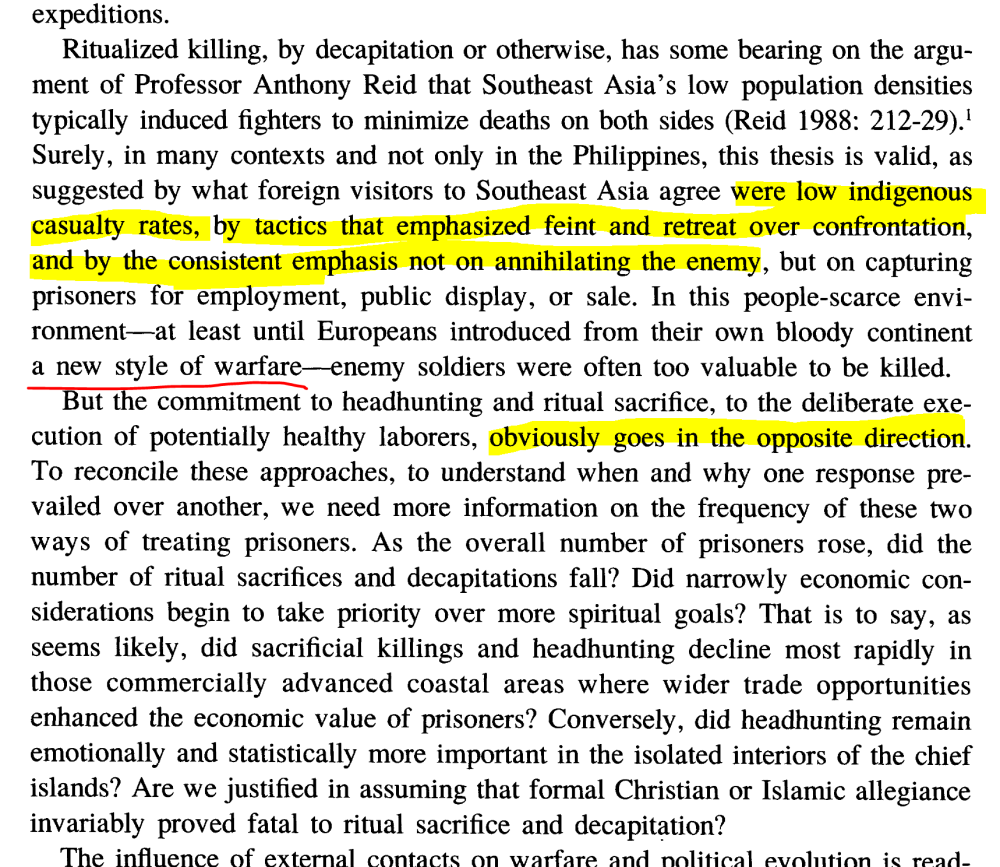

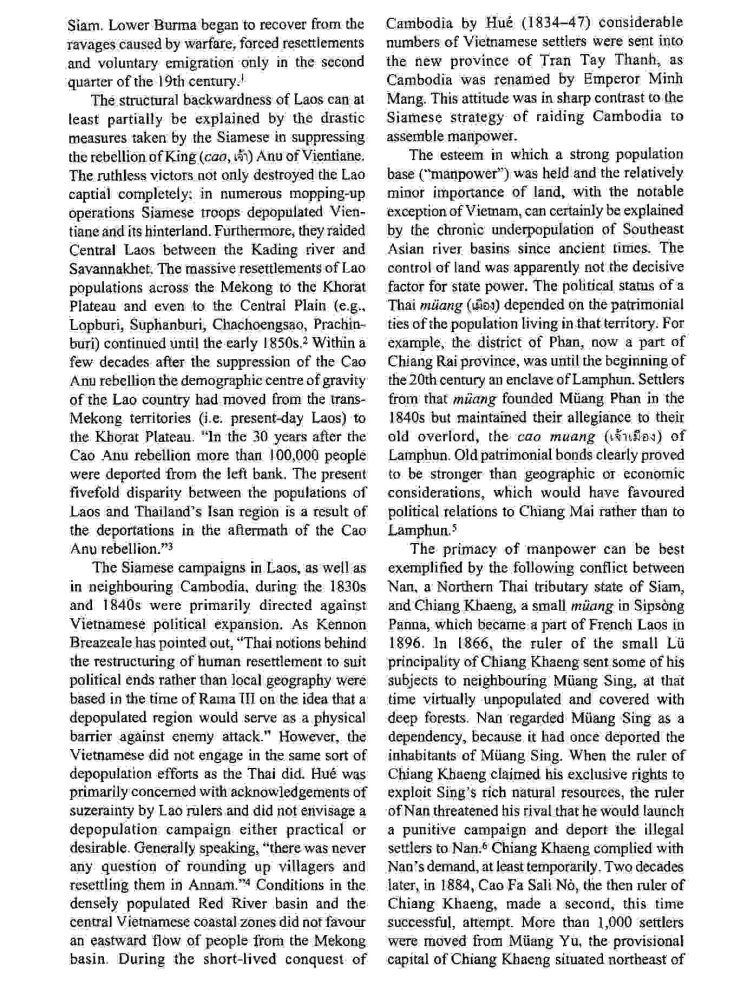
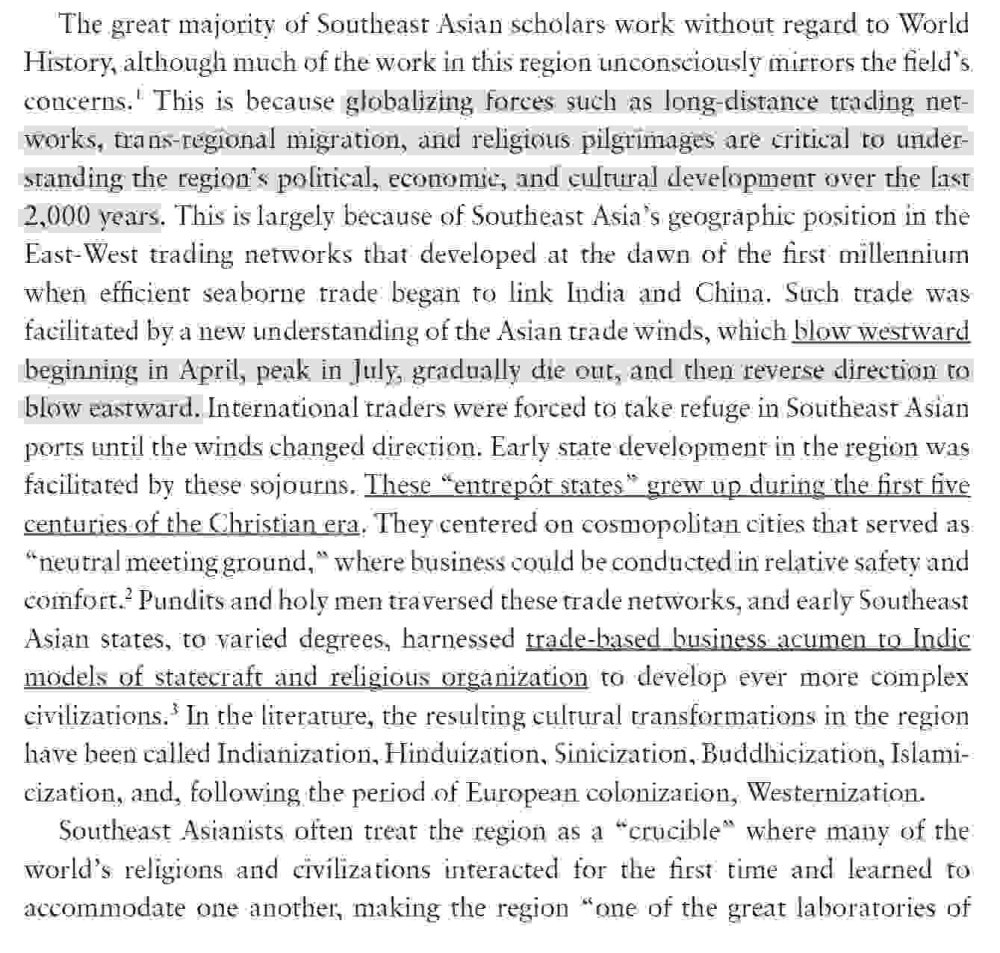
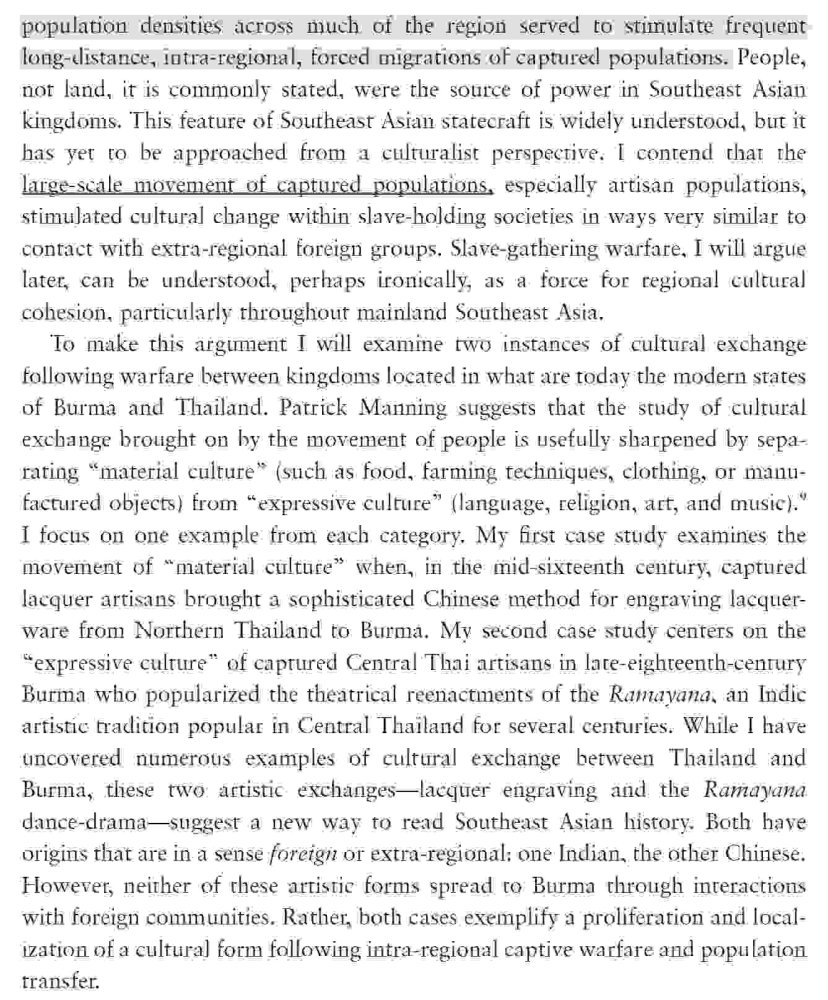
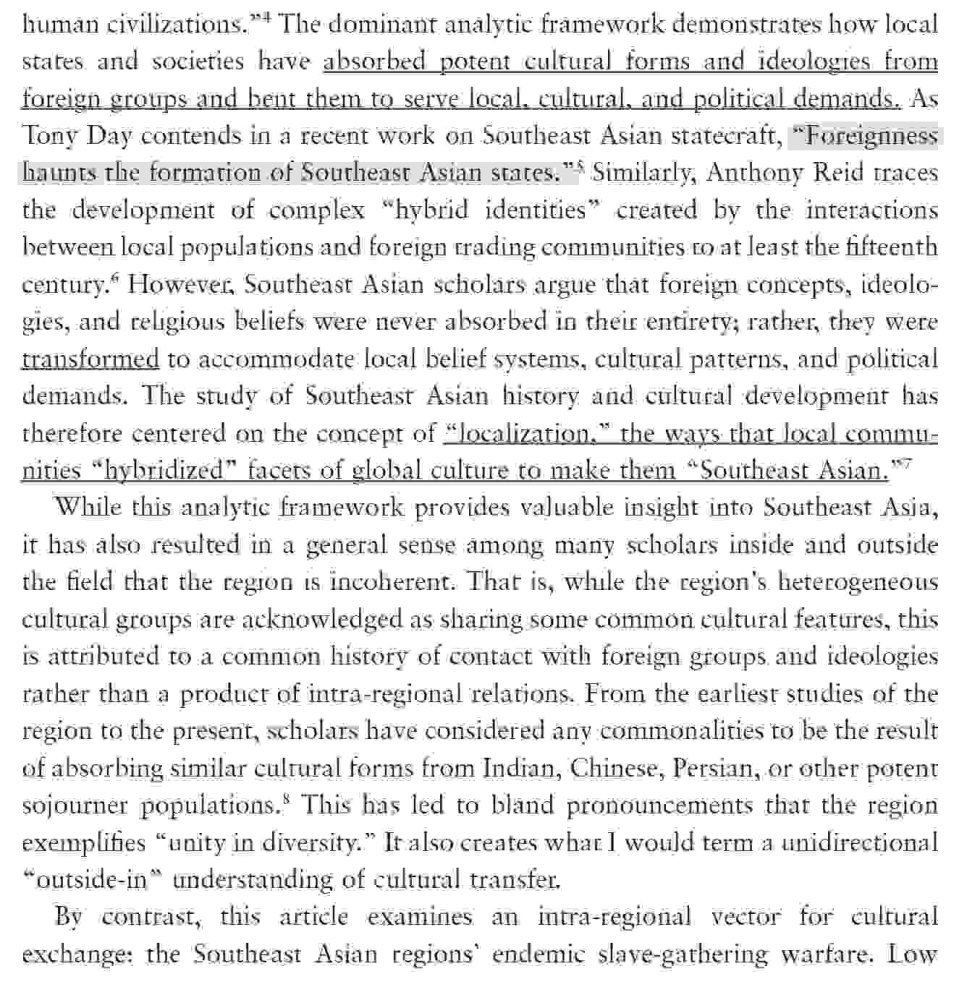
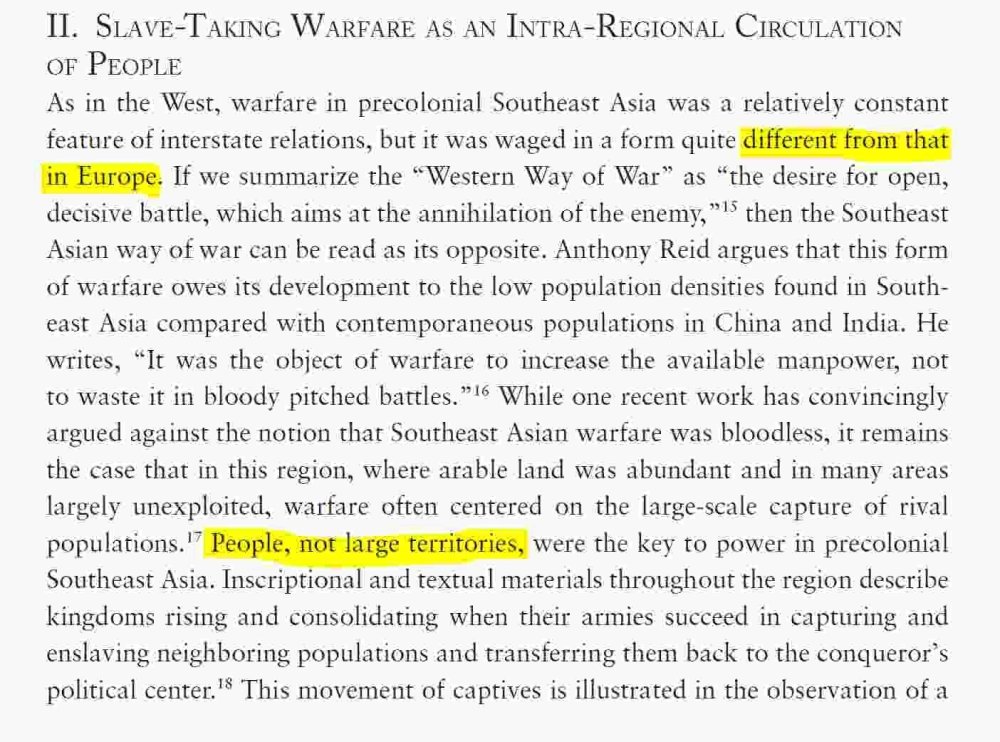
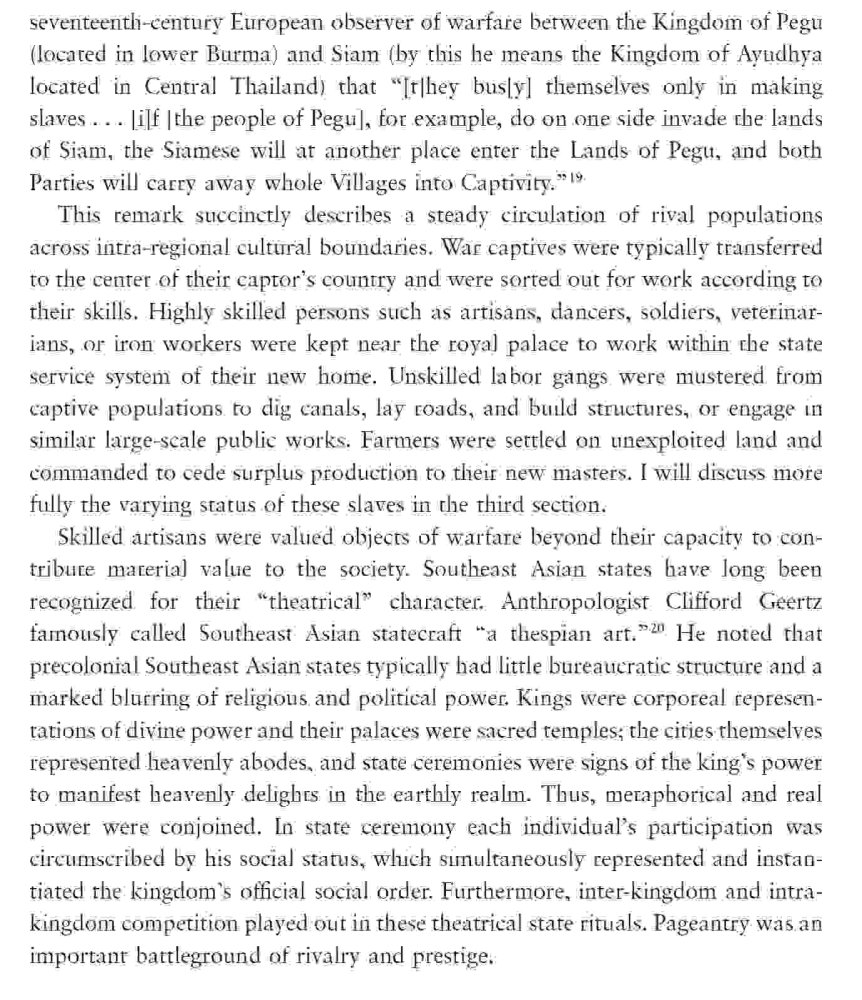

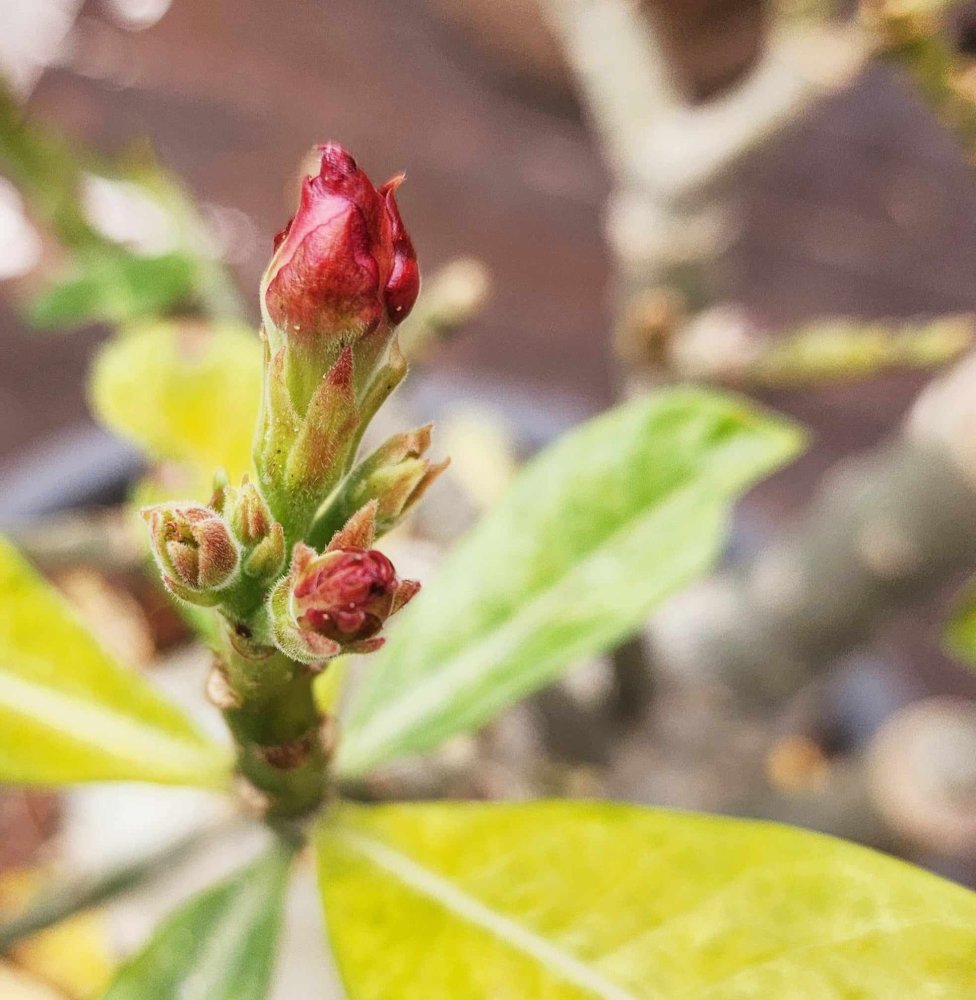
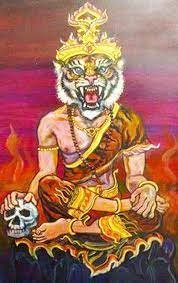
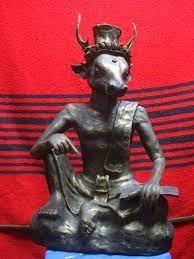
.thumb.jpg.ab75af9f6587a66ad030c0f4840614f1.jpg)